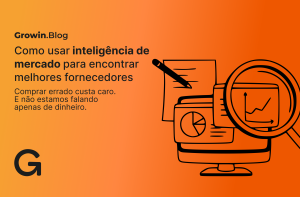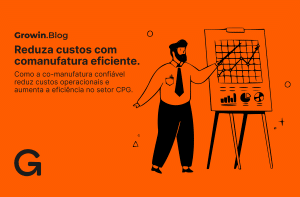In the CPG industry, Time-to-Market (TTM) has become a critical metric for success. TTM refers to the duration from the initial product idea to the moment it becomes available for sale. This timeline encompasses every stage of product development, including research, design, manufacturing, and distribution.
Speed is the essence in the CPG sector. Rapidly changing consumer preferences, intense competition, and the constant influx of new products make reducing TTM a vital strategy for companies aiming to maintain and grow their market share. Faster TTM means companies can respond more swiftly to market demands, seize new opportunities, and gain a significant competitive edge.
Digital transformation is revolutionizing how CPG companies operate, offering innovative solutions that streamline processes, enhance efficiency, and ultimately reduce TTM. By leveraging advanced technologies such as automation, artificial intelligence (AI), data analytics, cloud computing, and the Internet of Things (IoT), companies can accelerate product development cycles, optimize supply chains, and improve overall responsiveness to market changes.
We will explore how digital transformation is not just an option but a necessity for CPG companies striving to reduce TTM. We will delve into specific digital tools and technologies driving this change, examine real-world applications and case studies and discuss challenges and solutions.
When we talk about digital transformation, we’re referring to the integration of digital technology into all the aspects of a business, changing how it operates and delivers value to customers, improving processes, enhancing customer experience and, of course, driving innovation across the organization.
To bring digital transformation into the business, you’ll want to include some key components such as a clear strategy on how this technologies will be integrated to the business; investments in hardware, software and network; implementation of systems and processes to collect and analyze data, improving the customer experience to enhance engagement and satisfaction; and some others like getting to train the employees, taking care of security and cultivating a culture of innovation.
Digital transformation is revolutionizing the CPG landscape by empowering companies to innovate, optimize operations, and engage with consumers in new and exciting ways. The innovative CPG companies can have access to different data in social media, AI’s or customer feedback, which allows them to understand consumer preferences, trends, transforming the decision and making it much more assertive and strategic.
Blockchain, IoT and predictive analytics are some of the technologies being used to optimize supply chain operations in the CPG industry. These ones help improve inventory management, reduce lead times, minimize stockouts and enhance overall efficiency and transparency across the supply chain.
As it is important for supply chain and processes, digital tools are also accelerating innovation in product development for CPG companies, enabling them to develop faster and more cost-effectively. One example is the use of 3D printing to prototype before launching them, reducing time to-market and minimizing risks.
Unilever, a global leader in CPG, has integrated 3D printing technology into its product development process to enhance innovation and speed up time-to-market. They use 3D printing to create rapid prototypes of new product designs and package solutions. With that, they can significantly reduce the costs associated with traditional prototyping methods and also bring new products to market faster than competitors.
Adopting digital tools and technologies delivers lots of benefits for the CPG industry including enhanced operational efficiency, improved product development cycles, and better consumer alignment. Better consumer alignment is attained through personalization, offering tailored experiences and customized products. These advancements result in increased competitiveness, higher customer satisfaction, and greater profitability for CPG companies.
For manufacturing, using automated processes brings transformative benefits, including heightened efficiency, reduced costs, and enhanced product quality. Automation in manufacturing involves deploying advanced technologies such as robotics, AI, and IoT to streamline production, minimize human error, and improve precision.
By reducing errors and improving precision, automated processes minimize the need for rework and quality assurance checks, streamlining the production flow. Consistent and reliable manufacturing outputs mean products are ready for market distribution faster, enhancing overall productivity.
Several CPG companies have successfully leveraged digital transformation to enhance their operations, product offerings, and customer engagement.
A great case on digital transformation is the great Coca-Cola company. They use big data and AI to gather insights on consumer preferences and tailor its product offerings accordingly. The “Freestyle” vending machines are a prime example of leveraging digital technology; these machines use touchscreen interfaces and IoT connectivity to offer a wide variety of drink combinations, collecting valuable data on consumer choices.
Related to health and hygiene, P&G and Colgate-Palmolive have introduced connected products such as toothbrushes that connect to smartphones to provide personalized dental care tips and feedback on brushing habits.
In F&B industries, there are other cases such as Nestlé, that uses IoT and data analytics to optimize its supply chain operations, reducing waste and improving efficiency; Mondelez, that uses AI and predictive analytics to understand consumer behavior and preferences, driving product innovation and marketing strategies.
Implementing digital transformation in CPG companies involves a range of challenges, such as supply chain complexity, fragmented data in various departments, the rapid shifts in consumer preferences, regulatory and legacy compliances, cybersecurity risks and high implementation costs.
To solve these challenges, the organizations can develop a customer-centric approach, which will guide the experiences to build stronger relationships with the customers; they can also collaborate with strategic partners, technology providers, startups, and other industry players to leverage external expertise, access innovative solutions, and share risks.
At this point, collaborating with different partners or co-manufacturing can help the CPG companies to access advanced technologies, having the flexibility to scale production up or down based on demand fluctuations, improving the supply chain efficiency and creating time to focus on core competencies such as product development, marketing, and sales. Not to mention the cost efficiency, that can reduce operational costs by leveraging the economies of scale and efficiencies that specialized manufacturers offer.
In our platform, CPG big players are significantly reducing their time-to-market with co-manufacturing projects. Some good cases have shown outcomes of 1 new SKU in the timeframe of only 45 days.
So, being updated in technologies and collaborating with suppliers and partners can be a good way of reducing the time-to-market. Of course, there are other highly important factors to dictate a successful case in the CPG market and the quality always brings most of the attention, but staying ahead in a rapidly evolving market can really make a difference. Connect with GrowinCo. and find the best match for your products.




